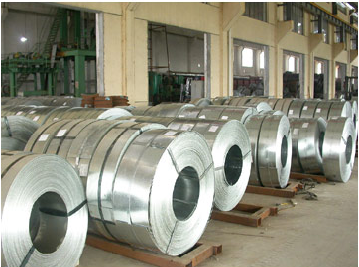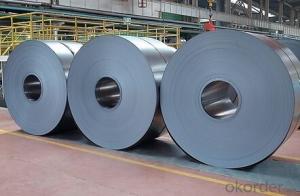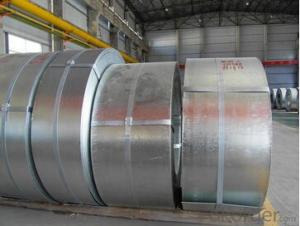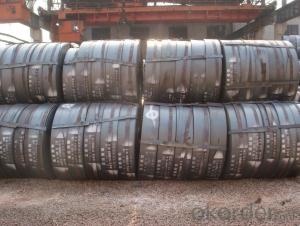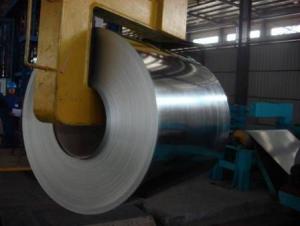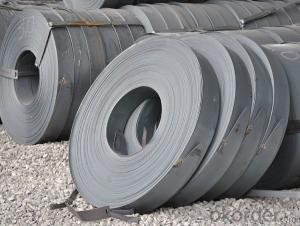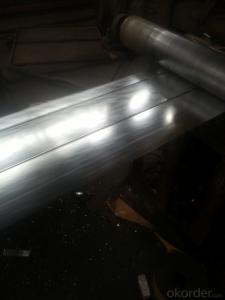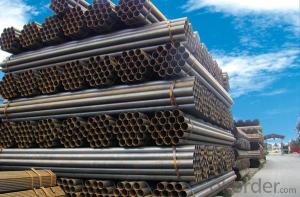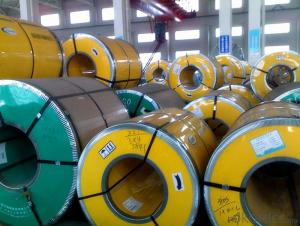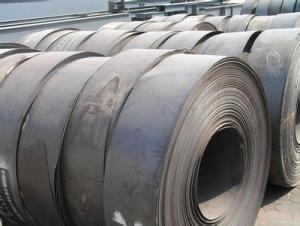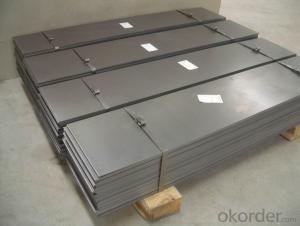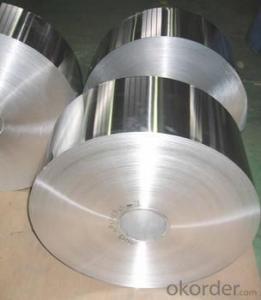Hot dipped galvanized steel strips
- Loading Port:
- China Main Port
- Payment Terms:
- TT OR LC
- Min Order Qty:
- -
- Supply Capability:
- 10000吨 m.t./month
OKorder Service Pledge
Quality Product, Order Online Tracking, Timely Delivery
OKorder Financial Service
Credit Rating, Credit Services, Credit Purchasing
You Might Also Like
Our products are used in steel structure projects and building metallic materials, such as roofing systems, C-shape purlin, U-shape steel channels, welded pipes,and highway guardrails.Our annual production capability has reached 150,000 metric tons.
We have become one of the leading enterprises engaged in the production of hot dipped galvanized steel coils in China, with advanced equipment and technology.
Product Name:hot dipped galvanized steel strips
Features:
1) Available thickness: 1.0mm-3.0mm
2) Available width: less than 700mm
3) Zinc coating mass: 275gsm can be provided as clients' requirements
4) Spangle: regular spangle
5) Surface treatment: chromated or not; oiled or not
- Q: Can steel strips be used in the production of medical implants?
- Indeed, the utilization of steel strips is feasible in the fabrication of medical implants. Owing to their robustness, endurance, and resistance to corrosion, steel strips frequently serve as primary materials for the manufacturing of medical apparatus and implants. These strips possess the capability to be molded, trimmed, and shaped into assorted implant constituents, including plates, screws, rods, and wires. Furthermore, steel strips can undergo surface treatments or coatings to heighten biocompatibility, diminish friction, or expedite the process of osseointegration. On the whole, steel strips are widely employed in the production of medical implants, thereby offering patients reliable and enduring solutions.
- Q: What is the typical thickness tolerance for steel strips?
- The typical thickness tolerance for steel strips can vary depending on the specific application and industry standards. However, a common range for thickness tolerance in steel strips is typically around ±0.001 to ±0.005 inches.
- Q: What are the benefits of using pre-painted steel strips?
- The benefits of using pre-painted steel strips include enhanced durability and corrosion resistance, reduced maintenance and painting costs, improved aesthetics, and efficient installation due to the ready-to-use nature of the pre-painted strips.
- Q: Can steel strips be used in food processing or medical applications?
- No, steel strips are not suitable for direct use in food processing or medical applications. They may contain contaminants or chemicals that could potentially contaminate the food or interact with medical substances. Specialized food-grade or medical-grade materials are typically used to ensure safety and maintain hygiene standards in these industries.
- Q: What are the different methods for grinding steel strips?
- There are several methods for grinding steel strips, including surface grinding, centerless grinding, and cylindrical grinding.
- Q: What are the common heat treatment processes for steel strips?
- Steel strips can undergo various heat treatment processes, such as annealing, quenching, tempering, and hardening. Annealing entails heating the steel strip to a specific temperature and gradually cooling it down to alleviate internal stresses and enhance machinability. This process also boosts the steel's ductility and toughness, making it easier to shape and work with. Quenching, on the other hand, involves rapidly cooling the steel strip by immersing it in a quenching medium like oil or water. This swift cooling procedure strengthens the steel, rendering it more robust and resistant to wear. However, quenched steel can be brittle, necessitating further tempering. Tempering is a subsequent step to quenching that entails reheating the steel strip to a particular temperature and then cooling it at a controlled pace. This procedure diminishes the brittleness caused by quenching and enhances the steel's toughness and ductility. Tempering also helps relieve internal stresses and enhances the steel's resistance to fracturing. Hardening, similar to quenching, involves heating the steel strip to a high temperature and rapidly cooling it. This method heightens the steel's hardness and strength, making it suitable for applications that require exceptional wear resistance and durability. Each heat treatment process can be modified regarding temperature, cooling rate, and duration to achieve specific desired properties in the steel strip. The selection of a heat treatment process depends on the intended application and the desired mechanical and physical traits of the steel.
- Q: Can steel strips be used in the production of watch dials?
- Yes, steel strips can be used in the production of watch dials. Steel is a durable and versatile material that is commonly used in various industries, including watchmaking. Steel strips can be cut and shaped into the desired size and design for watch dials. The steel can also be further processed to achieve different finishes, such as brushed or polished, to enhance the aesthetics of the watch dial. Additionally, steel is known for its corrosion resistance and strength, making it a suitable material for watch dials that need to withstand daily wear and tear.
- Q: What are the different edge conditions for steel strips?
- The different edge conditions for steel strips can include mill edge, slit edge, deburred edge, rounded edge, and sheared edge.
- Q: Can steel strips be used in marine or offshore applications?
- Marine or offshore applications can benefit from the utilization of steel strips. Steel, being a versatile and durable material, can endure harsh environmental conditions, including exposure to saltwater and high levels of humidity. Various marine and offshore projects, such as shipbuilding, offshore platforms, pipelines, and underwater structures, can make use of steel strips. To ensure resistance to corrosion, steel strips employed in marine or offshore applications are typically crafted from corrosion-resistant alloys or coated with protective coatings. These coatings, which may consist of galvanization, epoxy coatings, or specialized marine-grade paint systems, serve to prevent rust and corrosion. By employing these protective measures, the longevity of steel strips in marine environments is extended as they can withstand the corrosive effects of saltwater. The high strength-to-weight ratio possessed by steel strips makes them a popular choice in marine and offshore applications. This characteristic is essential in constructing structures that are lightweight yet robust. Furthermore, steel is easily workable and can be fabricated into various shapes and sizes, rendering it suitable for a wide range of marine and offshore projects. In conclusion, steel strips are an economical and dependable option for marine and offshore applications. They provide durability, resistance to corrosion, and structural integrity in demanding environments.
- Q: What are the packaging requirements for transporting steel strips?
- The packaging requirements for transporting steel strips typically include using strong and sturdy materials such as wooden crates or steel boxes to protect the strips from damage and ensure their stability during transportation. The packaging should provide proper cushioning and padding to prevent any shifting or movement of the strips. Additionally, it is important to secure the packaging with appropriate strapping or fastening methods to minimize the risk of the strips coming loose or falling out.
Send your message to us
Hot dipped galvanized steel strips
- Loading Port:
- China Main Port
- Payment Terms:
- TT OR LC
- Min Order Qty:
- -
- Supply Capability:
- 10000吨 m.t./month
OKorder Service Pledge
Quality Product, Order Online Tracking, Timely Delivery
OKorder Financial Service
Credit Rating, Credit Services, Credit Purchasing
Similar products
Hot products
Hot Searches
Related keywords


